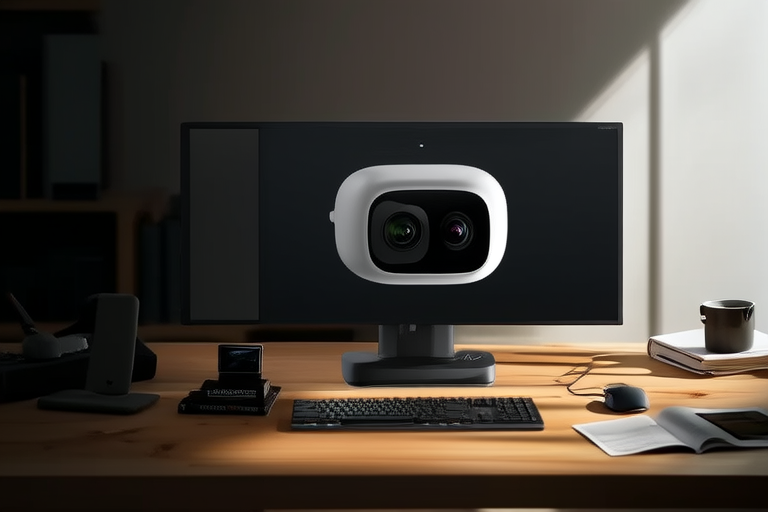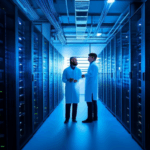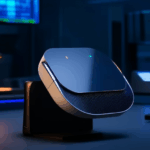“`html
The Rise of Computer Vision: Transforming Everyday Technologies
Introduction
Computer vision, a branch of artificial intelligence, involves enabling machines to interpret and understand visual information from the world around them. This technology has become increasingly significant in modern society, driving innovation across numerous sectors. From enhancing consumer devices to revolutionizing industrial processes, computer vision is transforming the way we interact with technology. In this article, we will explore its core principles, key applications, and the ethical considerations surrounding its rapid advancement.
What is Computer Vision?
Computer vision is the science of teaching computers to interpret and understand digital images and videos in the same way humans do. It leverages advanced algorithms and deep learning techniques to analyze visual data, identify patterns, and make decisions based on that information. Unlike traditional image processing, which focuses on manipulating images, computer vision aims to extract meaningful insights and enable machines to “see.”
Recent advancements in computational power, large datasets, and sophisticated neural networks have propelled the growth of computer vision. These improvements have made it possible to develop more accurate and efficient systems capable of handling complex tasks such as object detection, facial recognition, and scene understanding.
Applications in Consumer Devices
Smartphones
One of the most prominent applications of computer vision can be found in smartphones. Facial recognition technology allows users to unlock their devices securely and privately. Augmented reality (AR) filters enhance user experiences by overlaying digital elements onto the real world, creating immersive and interactive experiences. Camera enhancements powered by computer vision improve image stabilization, depth sensing, and low-light photography.
Smart Home Devices
Smart home devices, such as security cameras and smart speakers, utilize computer vision to provide enhanced security, surveillance, and automation. These systems can detect motion, recognize faces, and even monitor environmental conditions, ensuring a safer and more comfortable living space. For instance, smart cameras can alert homeowners to unusual activities or intrusions, while voice-activated assistants can respond to gestures and commands, making homes more accessible.
Wearables
Wearable devices, including fitness trackers and smartwatches, incorporate computer vision for health monitoring, gesture control, and fitness tracking. These devices can track heart rate, monitor sleep patterns, and even assist in physical therapy by analyzing body movements and providing real-time feedback. Additionally, gesture control features allow users to interact with their devices without touching them, offering convenience and accessibility.
Industrial and Business Use Cases
Manufacturing
In manufacturing, computer vision plays a crucial role in improving quality control, enhancing robotic process automation, and implementing predictive maintenance. By analyzing production lines in real-time, computer vision systems can detect defects and inconsistencies, ensuring product quality. Robotic arms equipped with computer vision can perform precise tasks, reducing errors and increasing efficiency. Predictive maintenance systems can anticipate equipment failures before they occur, minimizing downtime and optimizing resource allocation.
Retail
The retail industry benefits significantly from computer vision through enhanced customer experiences, improved inventory management, and the emergence of cashier-less stores. Personalized recommendations based on customer preferences and browsing history can increase sales and customer satisfaction. Computer vision systems can also streamline inventory management by automatically tracking stock levels and identifying misplaced items. Amazon Go stores exemplify the potential of cashier-less retail, where customers can simply walk in, pick up items, and leave without waiting in line at checkout counters.
Healthcare
Computer vision has a profound impact on healthcare, particularly in medical imaging, diagnostics, and surgical assistance. Radiologists can leverage computer vision algorithms to analyze X-rays, MRIs, and CT scans, identifying abnormalities and diagnosing diseases with greater accuracy. Surgeons can benefit from augmented reality overlays that provide real-time guidance during procedures, improving precision and reducing risks. Additionally, telemedicine platforms incorporate computer vision to facilitate remote consultations and examinations, expanding access to healthcare services.
Autonomous Systems
Autonomous Vehicles
Self-driving cars rely heavily on computer vision to perceive their environment and navigate safely. These vehicles are equipped with multiple cameras, lidar sensors, and radar systems that work together to create a comprehensive understanding of the surroundings. Computer vision algorithms analyze the data collected by these sensors, detecting pedestrians, vehicles, road signs, and obstacles. This information enables autonomous vehicles to make informed decisions, ensuring safe and efficient travel.
Drones
Drones equipped with computer vision are utilized for surveying, delivery, and search-and-rescue missions. In agriculture, drones can assess crop health, monitor soil conditions, and optimize irrigation systems. Delivery drones can transport packages to remote locations, reducing delivery times and costs. Search-and-rescue drones can quickly locate missing persons or survivors in disaster-stricken areas, saving lives and resources. The ability of drones to autonomously navigate challenging environments makes them invaluable tools in various industries.
Robotics
Service robots integrated with computer vision can perform a wide range of tasks, from cleaning and delivering meals to assisting elderly individuals. These robots can navigate through complex environments, recognize objects, and interact with people. For example, cleaning robots can autonomously map and clean floors, while delivery robots can deliver packages to specific locations within buildings. Elderly care robots can assist with daily activities, monitor health, and provide companionship, enhancing the quality of life for seniors.
Ethical Considerations and Future Trends
Privacy Concerns
The widespread adoption of computer vision raises important privacy concerns. As cameras and sensors become more prevalent in public spaces and personal devices, there is a growing need to ensure data privacy and obtain proper consent from individuals. Companies must implement robust security measures and transparent policies to protect user data and maintain trust.
Bias and Fairness
Potential biases in computer vision algorithms can lead to unfair treatment of certain groups. For instance, facial recognition systems may exhibit higher error rates for individuals with darker skin tones. Efforts are underway to address these biases by developing more inclusive datasets and employing fairness-aware algorithms. Continuous testing and evaluation are essential to ensure that computer vision systems operate equitably and responsibly.
Future Developments
The future of computer vision holds exciting possibilities, including real-time 3D understanding, multi-modal perception, and collaboration with other AI technologies. Real-time 3D understanding will enable machines to perceive depth and spatial relationships, enhancing navigation and interaction capabilities. Multi-modal perception combines visual data with other sensory inputs, such as audio and touch, to create more comprehensive and context-aware systems. Collaboration with other AI technologies, such as natural language processing and robotics, will further expand the potential applications of computer vision.
Conclusion
The rise of computer vision is transforming everyday technologies across various industries. From consumer devices to industrial applications and autonomous systems, its impact is undeniable. By enabling machines to interpret and understand visual information, computer vision is shaping the future of technology and human interaction. As this field continues to evolve, it is crucial to address ethical concerns and promote responsible development. The potential of computer vision is vast, and its continued progress promises to bring about even more groundbreaking innovations.
“`


